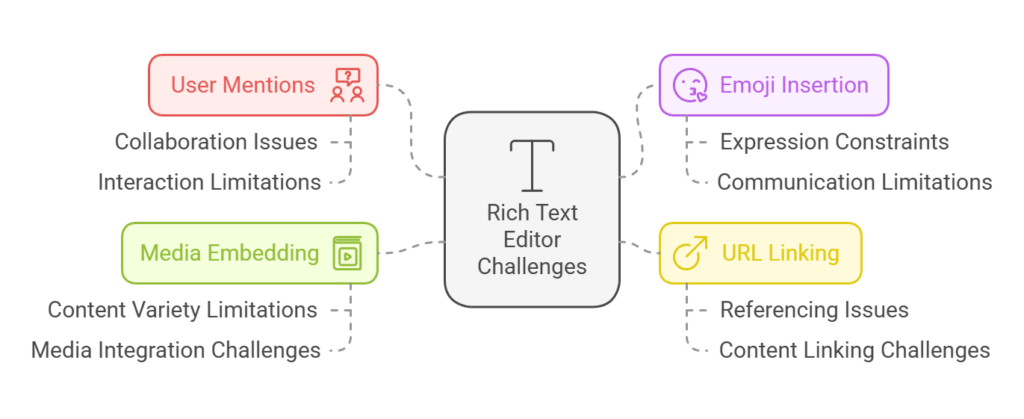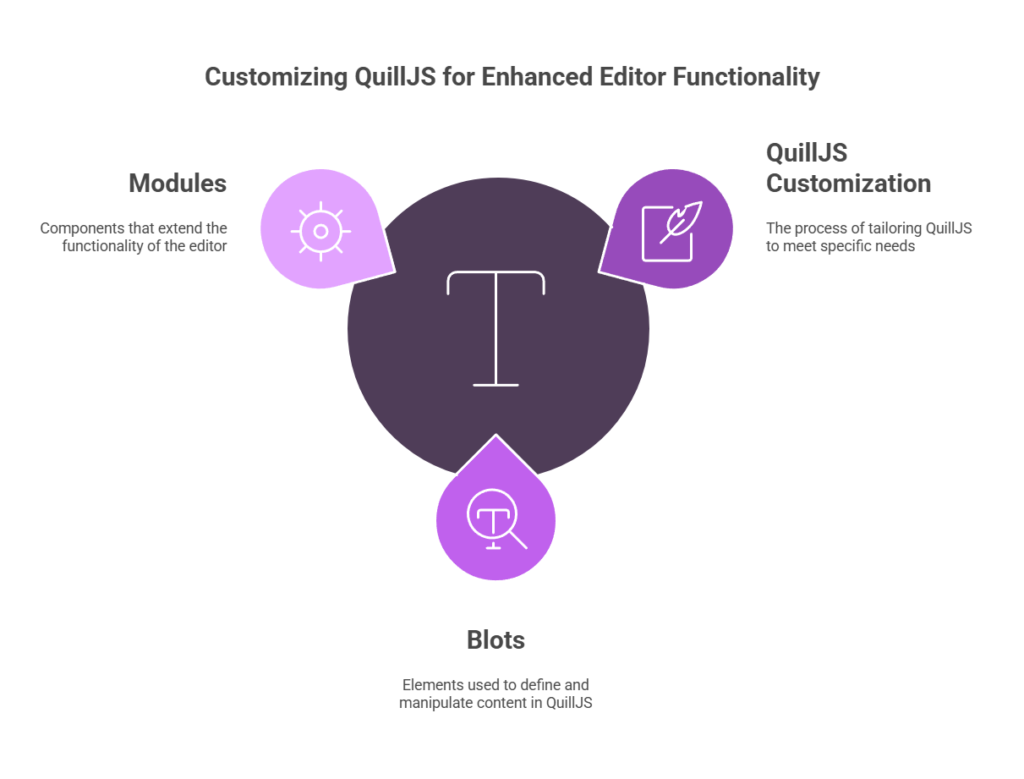Abstract
This case study explores the challenges faced in a ReactJS TypeScript application regarding the limitations of a rich text editor. The initial implementation lacked essential features such as user mentions, emoji insertion, URL linking, and media embedding. To address these issues, we customized the QuillJS editor by developing specific blots and modules to enhance its functionality. This document outlines the problems encountered, the solutions implemented, and the overall impact on the user experience.
Introduction
In modern web applications, rich text editors play a crucial role in providing users with a seamless content creation experience. However, our application faced significant limitations with the existing rich text editor, which hindered user engagement and content richness. Users were unable to mention other users, add emojis, link URLs, or embed images and videos, leading to frustration and decreased usability.
Problem Statement
The initial rich text editor implementation in our ReactJS TypeScript application presented the following challenges:

User Mentions
Users could not mention other users within the text, limiting collaborative interactions.
Emoji Insertion
The absence of emoji supports restricted users from expressing emotions and enhancing their messages.
URL Linking
Users were unable to link URLs, which is essential for referencing external content.
Media Embedding
The editor did not support embedding images and videos, reducing the richness of the content.
These limitations negatively impacted user experience and engagement, necessitating a robust solution.
Solution Overview
To overcome the challenges presented by the initial rich text editor, we decided to customize the QuillJS editor. QuillJS is a powerful and flexible rich text editor that allows for extensive customization through blots and modules. Our approach involved the following steps:

blots and modules to implement the missing functionalities:
Mention Module
Created a module that allows users to mention other users by typing “@” followed by the username. This feature enhances collaboration and interaction among users.
Emoji Module
Integrated an emoji picker that enables users to insert emojis into their content easily. This feature adds a layer of expressiveness to the text.
Link Module
Developed a module that allows users to paste URLs directly into the editor, automatically converting them into clickable links.
Image and Video Embedding
Implemented functionality for users to copy and paste images and videos directly into the editor, allowing for rich media content.
Implementation Steps
The implementation involved the following steps:

Setting Up QuillJS
We installed and configured QuillJS in our ReactJS TypeScript application.
Creating Custom Blots
We defined custom blots for mentions, emojis, and media embedding, ensuring they integrate seamlessly with the QuillJS editor.
Handling User Input
We implemented event handlers to manage user input for mentions and links, ensuring a smooth user experience.
Testing and Validation
Conducted thorough testing to ensure all features worked as intended and provided a consistent user experience across different browsers and devices.
Results
The customization of the QuillJS editor significantly improved the functionality and user experience of our rich text editor. Users can now:
- Mention other users, fostering collaboration.
- Insert emojis, enhancing emotional expression.
- Link URLs, providing easy access to external resources.
- Embed images and videos, enriching the content.
The feedback from users has been overwhelmingly positive, with increased engagement and satisfaction reported.
Conclusion
The challenges faced with the initial rich text editor in our ReactJS TypeScript application were effectively addressed through the customization of the QuillJS editor. By developing specific blots and modules, we enhanced the editor’s functionality, leading to a more engaging and user-friendly experience. This case study highlights the importance of adaptability in software development and the value of user feedback in driving improvements.